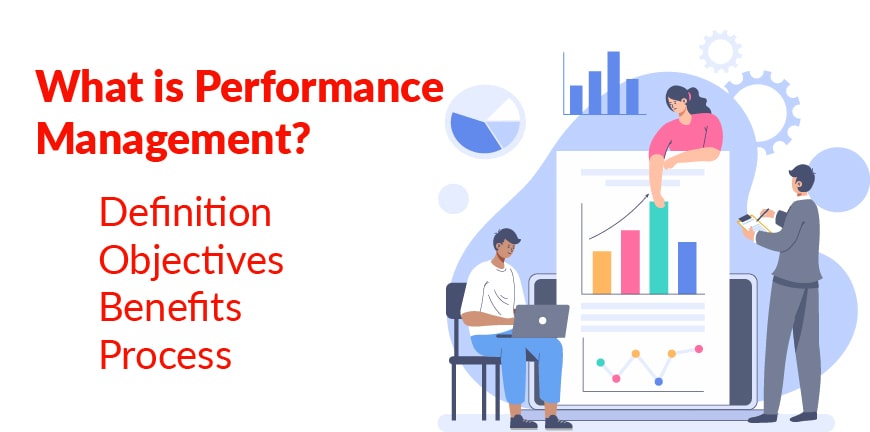
What is Unemployment? Definition, Types, Causes, Impact & Solutions
05/08/2025
Zoho People Plus: All You Need to Know
05/08/2025You need to choose people who fit with your culture, because your culture is eventually going to become your company.”- Sundar Pichai, CEO of Alphabet (Google)
Ever wondered how many types of employment are offered currently in the job market?
The business landscape is constantly evolving, and companies are continually seeking new strategies to effectively manage their workforce. To manage the operations and maintain high profit, they can’t rely on only one or two methods of employment, which can lead to more costs and underutilisation in case of excess workers than are necessary.
The types of employment chosen by companies depend on project goals, delivery timeline, available funds, budget planning, project complexity, etc. So, how many different types of employment are practised in the business world? Let’s find out!
What Are the 15 Different Types of Employment?
Employment definition as per the International Labour Organisation (ILO) states that “all individuals of working age who, during a specific period, were engaged in any activity to produce goods or provide services for which they get paid in cash or other rewards that help them manage their living expenses.”
The principal employment under which an individual is hired for an establishment dictates rights, responsibilities, pay, benefits, working hours, & job security. Understanding the various types of employment is crucial for the HR team, as it creates a foundation for building effective workforce strategies.
The responsibilities, compliance requirements, and cultural dynamics vary depending on the employment type, as full-time employment creates more work for HR when compared to temporary employment or seasonal employment, which third-party vendors typically manage.
Here are 15 types of employment typically offered by companies and establishments across India.
1. Full-time employment
Full employment definition is simple and states that ” It is a long-term work arrangement where a company hires an individual as a permanent employee and assigns tasks related to the business and expects complete involvement of around 40 hours per week as per legal requirements.”
Full-time employment entails a lot of benefits like health insurance, paid time off, a high salary package, gratuity, EPF, yearly appraisal, promotions, retirement benefits, etc. Full-time employees are expected to serve for a long duration and take up multiple responsibilities like training junior employees, leadership, communicating with clients, etc.
Most professionals prefer full-time employment as it offers financial security, career growth, long-term income, and higher respect in society.
2. Part-Time Employment
As the name suggests, part-time employment is a work arrangement where a company or a service provider engages an individual to perform certain tasks for a shorter duration, usually less than 35 hours a week. These types of employment are best for individuals who are unable to commit to a longer duration.
Part-time jobs offer flexibility in terms of availability & responsibilities, and are best suited for students, retired individuals, homemakers, and people with health issues who can’t engage in work for a long duration.
Typically, part-time employment is offered by industries such as delivery, food service, restaurant, education, healthcare, hospitality, etc. Unlike full-time employment, part-time employment doesn’t receive a lot of perks or compensation, making it unreliable and less attractive for individuals to pursue.
3. Fixed-Term Employment
In this employment arrangement, individuals with specific skills are hired for a fixed duration, for maybe 3 to 6 months, under an agreement to execute a particular project or a task and are paid until the contract expires or the project is completed, whichever is earlier. Unlike full-time employment, fixed-term employment doesn’t entail long-term commitment from companies and benefits are limited to the contract period.
Some of the industries that offer fixed-term employment include construction, retail, education, medical, IT, manufacturing, etc. The employment requirements under a fixed-term job include full-time availability for the contract period, project execution skills, and a willingness to work for relatively lesser compensation.
4. Gig Employment
Although this working model is not part of the traditional theory of employment, it is currently the most trending job type in the global workforce market. According to the World Bank, there are currently around 435 million workers registered under gig employment. Here, the employer will list projects or tasks on certain digital platforms and hire individuals who are the best fit.
Typically, gig workers work on their own terms without any restrictions on working hours & are given payment after task or project completion. While gig employment offers flexibility, it lacks job security, high pay, medical insurance, and other benefits enjoyed by full-time employees.
5. Freelance Employment
Freelancers are hired by employers on a project-to-project basis to perform certain tasks that may or may not require expertise. These types of employment are ideal for companies that are looking to scale their team without long-term commitment or the other benefits offered to permanent employees.
Freelancers are mostly suited for remote working and ideal for working on projects that involve coding, marketing, content writing, SEO, etc.
Typically, companies directly hire freelancers or partner with reputed offshore outsourcing companies like ALP Consulting to hire freelancers from all over the world to execute their projects on a short-term or long-term basis, based on business needs.
6. Seasonal Employment
It is a specific type of labour employment available during certain seasons or holiday periods. Seasonal jobs are offered for a short duration when there is demand for a particular skill, and once the task is completed, these workers are laid off until the next season arrives. Some industries that offer seasonal employment include agriculture, retail, delivery, construction, tourism, and others.
7. Temporary Employment
Temporary employment is a work arrangement where an individual is engaged for a limited duration, which can last 15 days up to 6 months to complete a task or a short-term project. This hiring model helps companies scale their workforce on an immediate basis without long-term commitment or benefits.
Industries such as manufacturing, retail, food & delivery, hospitality, medical, etc., use temporary workers hired using professional employment exchange agencies or independent hiring companies to perform certain non-core activities for a certain duration and release them when the tasks are completed or workload subsides significantly.
8. Apprenticeship
This level of employment is ideal for freshers or professionals who are entering a new industry. To offer employment opportunities to eligible candidates, government agencies and companies offer apprenticeship programs, either paid or unpaid. These programs are usually structured and for a short duration, which may be up to one year.
In some educational courses, especially graduation, students must enrol on an apprenticeship program approved by their college as a part of the curriculum and need to provide a completion certificate to prove their participation. Moreover, once the program is completed, candidates may be hired for full-time employment based on performance and available vacancies within the company.
9. Independent Contractors
This mode of employment is suitable for individuals with specialised expertise and can get the job done using their team for specific projects. Typically, independent contractors are self-employed but offer their services to companies or establishments on an hourly basis, or under a contract, a number of workers supplied, or through tenders.
Independent contractors have more control over how they execute their projects or tasks and will use their own set of tools, labour, and equipment. Consultants, building contractors, real estate agents, musicians, etc., are some examples of independent contractors.
10. Leased Employment
Leased employment is one of the most popular recruitment models, ideal for large-scale job creation. In this approach, companies partner with independent hiring agencies through a lease contract and use their employee resources to carry out their in-house operations or projects. The complete management of employees working under this arrangement lies with the leasing company, helping the client firm scale its workforce without administrative responsibilities.
11. Contingent Employment
Companies hire contingent workers for a specific project duration, either to provide additional support to permanent employees during a high workload or to act as a replacement for full-time employees who are not available due to certain unforeseen circumstances. Usually, companies partner with reputed contingency staffing agencies like ALP Consulting to get instant access to specialised expertise to meet their project demands.
12. Employment on Commission
Commission-based employment is unique from all the different types of employment discussed previously, as the pay fully depends on the performance or sales achieved. Companies will hire employees to achieve certain targets and pay them a consolidated amount once they are achieved.
These types of employment reduce labour costs and align compensation with performance. Sales, marketing, delivery, etc., are some of the sectors where employment on commission is prevalent and the preferred mode of hiring.
13. Contract Employment
In this workforce model, companies or agencies hire individuals with specific expertise for a fixed duration through a written agreement that includes terms and conditions of employment.
Contract employment mode is used for both white collar and blue-collar jobs. Once the contract ends, the workers are released from their duties without assurance of further work. However, if required, companies can extend the contract based on business needs and project demands.
14. Casual Employment
In this employment setup, workers are hired on demand with no long-term commitments and need to dedicate the required hours to complete a task or a project. Casual labourers are temporary employees who will receive certain benefits like food, specific compensation, etc., which may be applicable in case of freelancers, gig workers, or seasonal employees. Most industries, regardless of products, hire casual labour from time to time to meet their workforce aggregate demand.
15. Consulting
A consultant is a professional who offers expertise and services to companies on a per-project basis. The payment arrangement depends on the contract terms set between the consultant and the company, and the duration of collaboration varies as per project and business demands. IT, fintech, software development, HR management, etc., are some examples where consultant hiring is prevalent.
Key Takeaways
- Employment types vary to meet dynamic business workforce needs.
- Full-time roles offer security, whereas part-time roles offer flexibility.
- Gig and freelance jobs support short-term, skill-based tasks.
- Seasonal, temporary, and contract jobs ensure scalable hiring.
- Understanding contracts helps build efficient, compliant HR strategies.
Frequently Asked Questions
1. What is the meaning of employment?
According to the theory of employment, it is a legal relationship where a person works for an organisation or individual in exchange for wages or salary.
2. What is full employment?
Full employment is a work model where individuals are hired to work permanently for a minimum of 40 hours per week and carry out the responsibilities and tasks assigned by the company.
3. What is seasonal employment?
Seasonal employment refers to jobs available only during specific times of the year, like farming, tourism, or holiday retail work.
4. What is the difference between full-time and part-time employment?
Full-time employees work standard weekly hours, usually 35-40, while part-time employees work fewer hours, often with limited benefits.
5. How is contract employment different from temporary employment?
Contract employment is fixed term with specific roles, whereas temporary employment is short-term, often through staffing agencies, with less job security.
6. What are the main types of employment contracts?
The different types of employment contracts include permanent, fixed-term, temporary, freelance, part-time, and zero-hour contracts, each with its own defining terms, benefits, and job duration.
7. What is the difference between employment and unemployment?
Employment means having a paid job, whereas unemployment means actively seeking work but unable to find suitable job opportunities despite willingness.
8. What is the difference between an employee and an employer?
An employee works for a fixed or flexible compensation under an employer, who hires, manages, and compensates staff to run and grow the business.
Contact Us For Business Enquiry

Rajkumar Shanmugam
Rajkumar Shanmugam is the Head of HR at ALP Consulting, bringing over 19 years of comprehensive HR leadership experience across India and international markets. His expertise spans talent acquisition, employee relations, performance management, compliance, and HR transformation. Rajkumar has a proven track record of driving people-centric initiatives, enhancing workplace culture, and aligning HR strategy with business goals. With extensive experience in US staffing operations and global mobility, he continues to lead organizational excellence through innovation and employee engagement.




